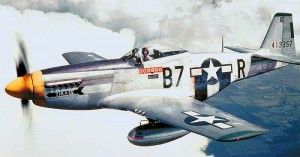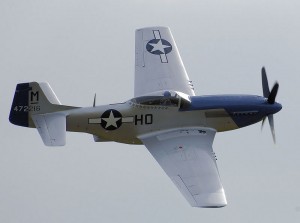One airplane which has always mesmerized me was the North American P-51D Mustang. Truly, the airplane and the pilots who flew her into combat were in a class of their own.
When I started flying in 1971, I came across my first issue of Trade-A-Plane. I would learn Trade-A-Plane was the primary publication for those seeking to become aircraft owners or who were just dreaming. I was amazed at the number of used aircraft available for sale throughout the United States. I will never forget underneath the column, North American Aviation, finding flyable P51-D Mustangs for a mere $15,000.
Today, Trade-A-Plane’s website has only two Mustangs listed for sale; the asking prices are $2.1 million and $1.5 million. I have often said, had I known in 1971 what I know now, I would have told my mother to sell everything she owned, including us kids, to buy as many Mustangs as possible to park in the desert for later. Who knew that investing in old combat aircraft would provide an incredibly higher return than Wall Street?
The Mustang is one of the great success stories of the Second World War. From idea to design to prototype to first flight took only 117 days. The early model Mustangs proved themselves well at altitudes below 15,000 feet, but it was the addition of bigger engines and refined turbochargers which allowed the airplane to shine as the long range bomber escort in the latter part of the war.
With the addition of external drop tanks, Mustang pilots were able to provide cover to the bombers deep into Europe. Missions were grueling, often lasting eight hours or more. But the men flying the airplanes at the time could “hack” it. They were young, many younger than 22.
Flying the Mustang was incredible. The engine driving the Mustang was the Packard V-1650-7, providing about 1490 horsepower at 3000 rpm. Later versions of the engine, the -9 model in particular, could provide emergency power of more than 2200 horsepower.
The P-51D had maximum takeoff weight of 12,100 pounds. The airplane had a normal cruise speed of 315 knots and a top speed of 380 knots. Off the runway, the initial climb rate reached 3200 feet per minute and the airplane could climb to and operate at FL 410.
On the low end of the operating spectrum, stall speed for the aircraft was about 85 knots. She could also be a handful for the pilot during landing. A leading non-combat cause of death for Mustang pilots, particularly inexperienced pilots, was the torque-induced roll caused by adding too much power too quickly during the go around process. This would cause the airplane to roll inverted close to the ground and the inexperienced pilot, disoriented, typically pulled back on the stick to gain altitude for safety. This of course, planted them straight into the ground destroying the aircraft and killing themselves.
Today, the P-51D no longer flies in combat. Of the remaining flyable aircraft, most see service as flying display aircraft at air shows. A few race pilots modified some Mustangs for use as air racers for the National Championship Air Races in Reno.
The .50 caliber Browning machine guns are forever silent.
-30-
© 2010 J. Clark




Flyinggma sent me. Great stuff. I build and paint 1/72 WWI airplanes. I am in Miami.
Hello, Carl, thank you for the comment. How long have you been in Miami?
Pingback: Aviation News January 15, 2011 :: N8JW